Zauschneria latifolia July 2010
Paeonia veitchii May 2010
Kniphofia nelsonii June 2009
Lilium 'White Henryi' July 2010
Sedum 'Matrona' August 2008
Here is a list of sun-loving perennials for gardens in Seattle, the Pacific Northwest & USDA Zone 8. It includes xeric perennials (those that like dry conditions) & perennials for moist sites. Most of these plants are fairly common in the temperate gardens of North America & Europe. None are difficult to grow. A perennial is any plant, not woody, that lives for at least a few years, although some are short-lived. Perennials include bulbs & grasses. Perennial groundcovers are listed in Groundcovers for Sun. Some genera have species that are both annuals & perennials, or both perennials & shrubs. Some perennials blur the line between perennials & shrubs, & are often called sub-shrubs. Some can be weedy, spreading widely by seeds. Others spread by stolons, which are horizontal above-ground shoots. Those are noted, although the worst of them are not listed here. A single common name is noted when the plant has a common name. While some have several common names, others have none at all. An excellent reference book for perennials is Perennials: The Definite Reference With Over 2,500 Photographs by Roger Phillips & Martyn Rix.
Perennials for Sun
Achillea (Yarrow): many species
Agapanthus campanulatus (Lily of the Nile): often sold as Headbourne Hybrids
Alcea rosea (Hollyhock): many cultivars
Allium (Ornamental Onion): many species
Anthemis tinctoria (Marguerite Daisy): xeric
Armeria maritima (Thrift): xeric
Aster (Michaelmas Daisy): many species & cultivars
Astrantia major (Masterwort): some cultivars
Baptisia australis (False Indigo): sun, tolerates some dryness.
Camassia leichtlinii, Camassia quamash (Camas): xeric
Campanula (Bellflower): many species
Centranthus ruber (Valerian): xeric
Cheiranthus cheiri (Wallflower)
Clematis integrifolia: not a vine
Coreopsis (Tickseed): xeric
Crocosmia (Flaming Iris): taller cultivars need support
Crocus: many species & cultivars
Cynara cardunculus (Cardoon): tall & dramatic
Delphinium (Larkspur): many cultivars, needs staking
Dianthus (Carnations & Pinks): many cultivars
Digitalis (Foxglove): short-lived but will return from seed
Echinops ritro (Globe Thistle): xeric
Echinacea paradoxa (Yellow Coneflower) Echinacea purpurea (Purple Coneflower): & other species & many cultivars
Erigeron glaucus (Beach Aster) Erigeron karvinskianus (Santa Barbara Daisy) Erigeron speciosus (Showy Fleabane): & other species
Eriophyllum lanatum (Oregon Sunshine): xeric
Eryngium amethystinum, Eryngium bourgatii, Eryngium planum, Eryngium variifolium (Sea Holly): & other species, E planum needs support
Erysimum 'Bowles Mauve' (Wallflower)
Eucomis comosa (Pineapple Lily): many cultivars
Eupatorium purpureum (Joe Pye Weed): & other species, needs moisture, may need staking
Festuca ovina ‘Elijah Blue’ (Blue Fescue): short-lived with some seeding
Fritillaria imperialis (Crown Imperial) Fritillaria meleagris (Chequered Lily): & other species
Galtonia candicans (Summer Hyacinth)
Gaura lindheimeri (Gaura): xeric, spreads widely by seed
Geranium cantabrigiense, Geranium 'Johnson's Blue', Geranium sanguineum (Cranesbill): many species & cultivars, not to be confused with Pelargonium (Geranium)
Geum (Avens): many species & cultivars
Gladiolus (Gladiolus, often Gladiola): many species & cultivars, some need staking
Helianthemum nummularium (Sunrose): several cultivars, xeric
Helenium autumnale (Sneezeweed): & other species, does not cause sneezing
Hemerocallis (Daylily): very many cultivars
Hyacinthus orientalis (Hyacinth): many cultivars, not to be confused with Muscari (Grape Hyacinth)
Kniphofia (Torch Lily): many species & cultivars
Lathyrus vernus (Perennial Vetch): short-lived with some seeding
Liatris spicata (Gayfeather)
Lilium (Lily): many species & cultivars
Limonium latifolium (Statice)
Linaria (Toadflax)
Lobelia cardinalis (Cardinal Flower): needs moisture, Lobelia tupa (Tupa): xeric, & other species
Lupinus (Lupine): many species & cultivars, some are shrubs
Lychnis coronaria (Rose Campion): xeric
Mimulus (Monkey Flower): many species, needs moisture or wetness
Monarda didyma (Bee Balm): several cultivars
Narcissus pseudonarcissus (Daffodil) Narcissus jonquilla (Jonquil): many species & cultivars
Nectaroscordum siculum (Mediterranean Bells)
Oenothera (Evening Primrose): spreads widely by seed
Ornithogalum umbellatum (Star of Bethlehem): xeric
Paeonia (Peony): many species & cultivars, some are shrubs, very long-lived
Panicum virgatum (Switchgrass): xeric
Papaver orientale (Oriental Poppy): & other species
Pennisetum setaceum (Fountain Grass)
Penstemon (Beardtongue): many species & cultivars, some shrubby, short-lived
Perovskia atriplicifolia (Russian Sage): xeric
Persicaria affinis, Persicaria amplexicaulis, Persicaria bistorta, Persicaria virginiana (Knotweed): needs moisture, can be invasive
Phlomis russeliana (Jerusalem Sage): xeric
Persicaria affinis, Persicaria amplexicaulis, Persicaria bistorta, Persicaria virginiana (Knotweed): needs moisture, can be invasive
Phlomis russeliana (Jerusalem Sage): xeric
Phlox (Phlox): many cultivars
Pulsatilla vulgaris (Pasque Flower): several cultivars
Ratibida columnifera (Mexican Hat): xeric
Romneya coulteri (Matilija Poppy): xeric, spreads widely by stolons
Salvia (Sage): many species, short-lived
Scilla peruviana (Giant Squill): xeric, from Spain, not Peru
Solidago (Goldenrod): many species
Tradescantia virginiana (Spiderwort): some cultivars
Tulipa batalinii, Tulipa turkestanica, Darwin Hybrid Tulip, Lily Flowering Tulip: many species & cultivars
Scrophularia macrantha: xeric
Sedum 'Autumn Joy', Sedum 'Matrona', Sedum 'Vera Jameson' (Stonecrop): & other cultivars, xeric
Sedum 'Autumn Joy', Sedum 'Matrona', Sedum 'Vera Jameson' (Stonecrop): & other cultivars, xeric
Stachys byzantina (Lamb’s Ears) Stachys monieri 'Hummelo' (Betony): & other species
Veronica spicata (Speedwell): & other species & cultivars
Zauschneria californica (California Fuchsia) Zauschneria latifolia: & other species, spreads widely by stolons


































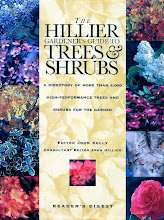

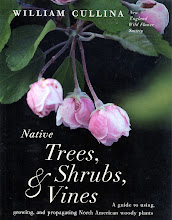






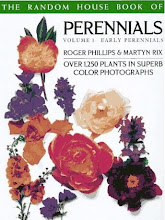
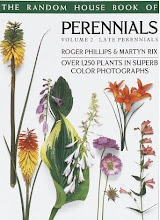

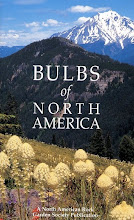






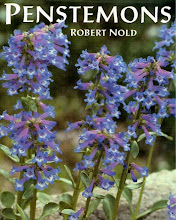

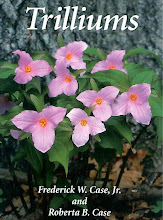


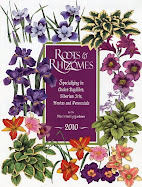


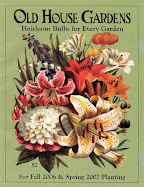

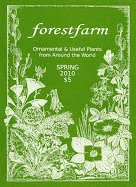




2 comments:
Excellent reference list...I might add Agastache...even though they don't always seem to overwinter successfully (at least some of the newer selections I've tried). Maybe persicaria...although I guess they do appreciate some afternoon shade.
Agastache hasn't made it through the winter for me. I seldom see it in Seattle gardens. I don't think it tolerates wetness. Persicaria is a good suggestion. I'll add it to the list. I was in PDX last weekend & saw a lot of Persicaria virginiana 'Painter's Palette'. I've heard it can get out of control, however.
Post a Comment